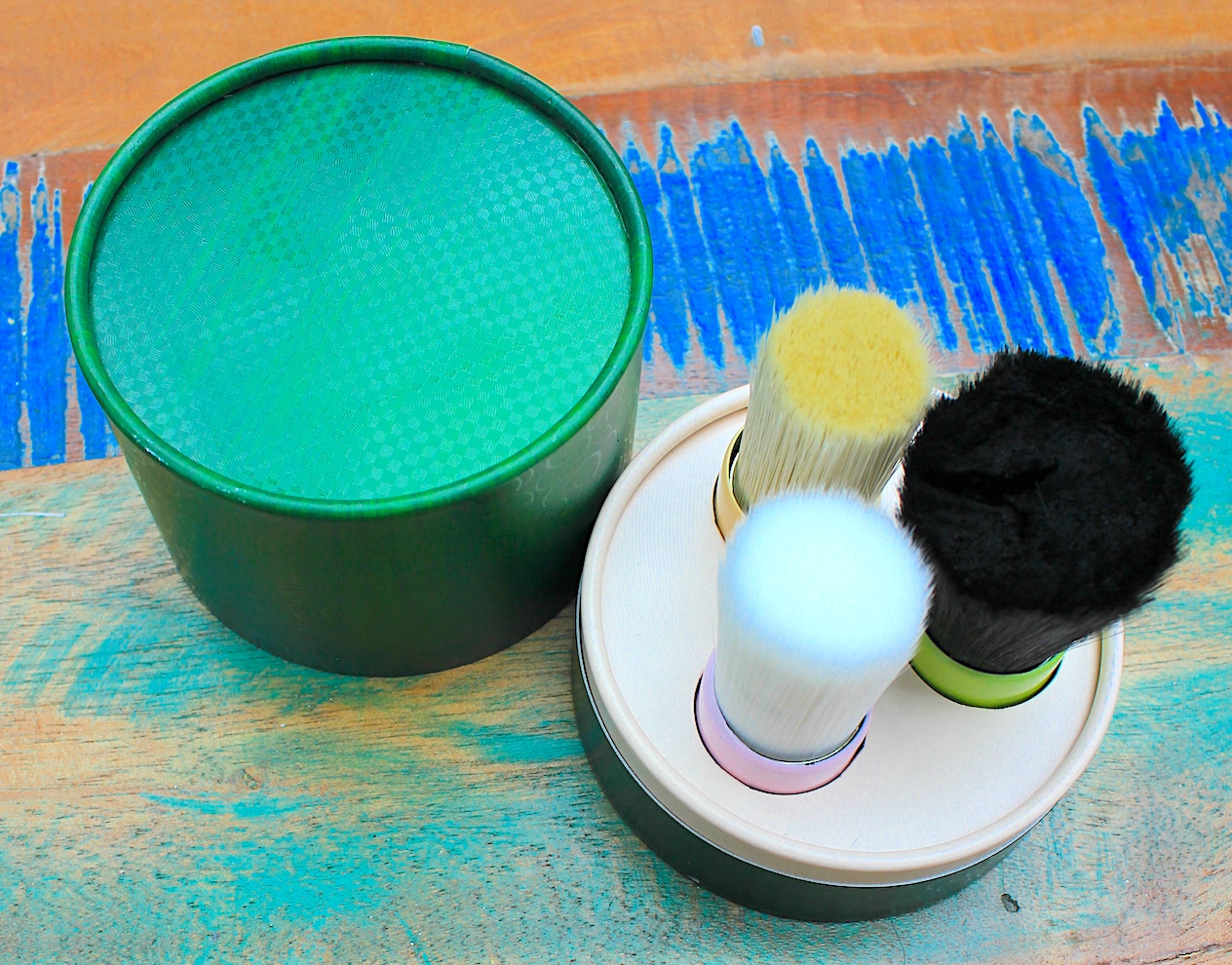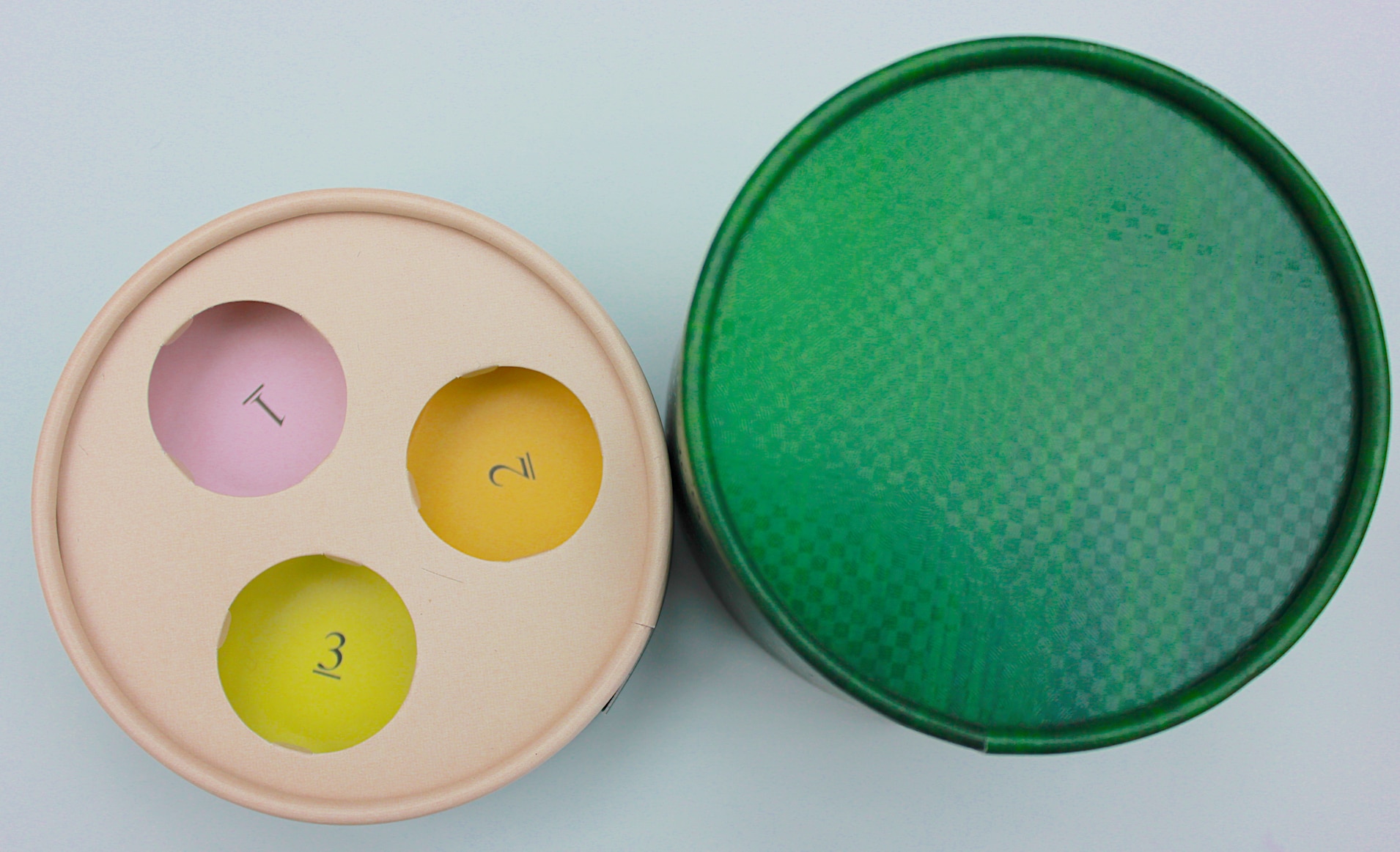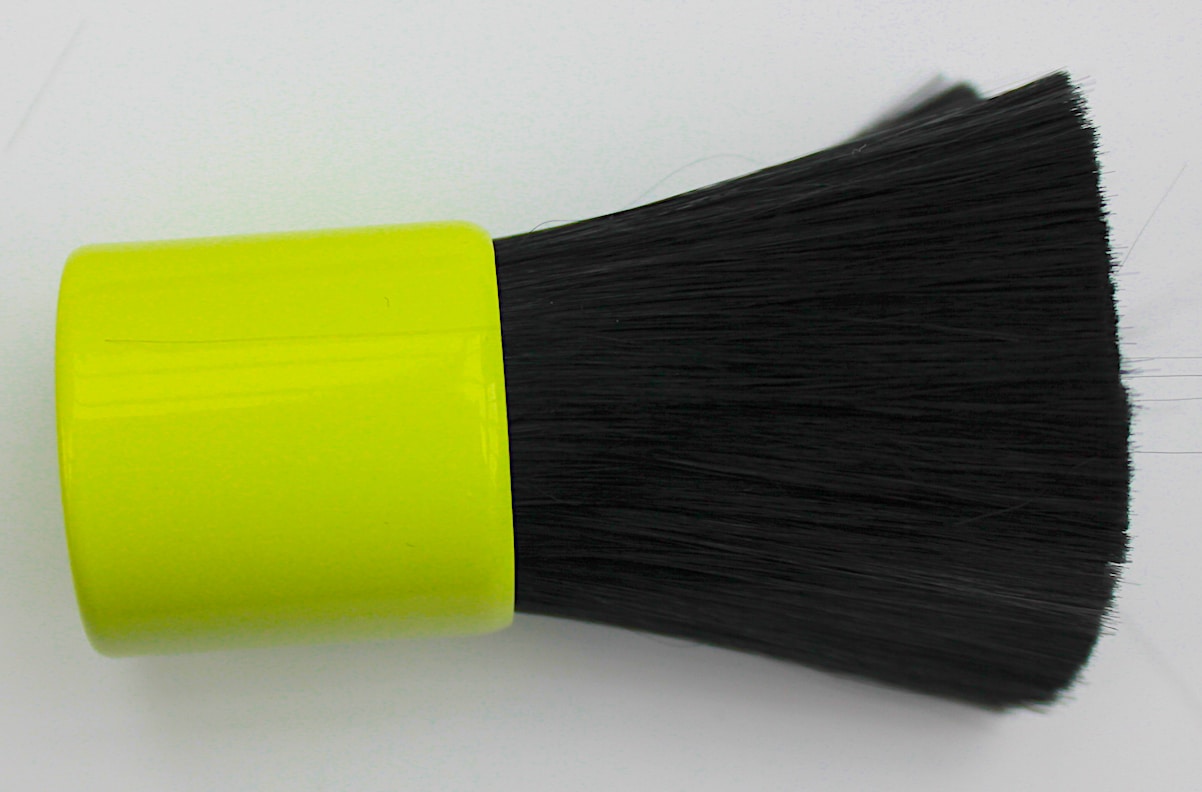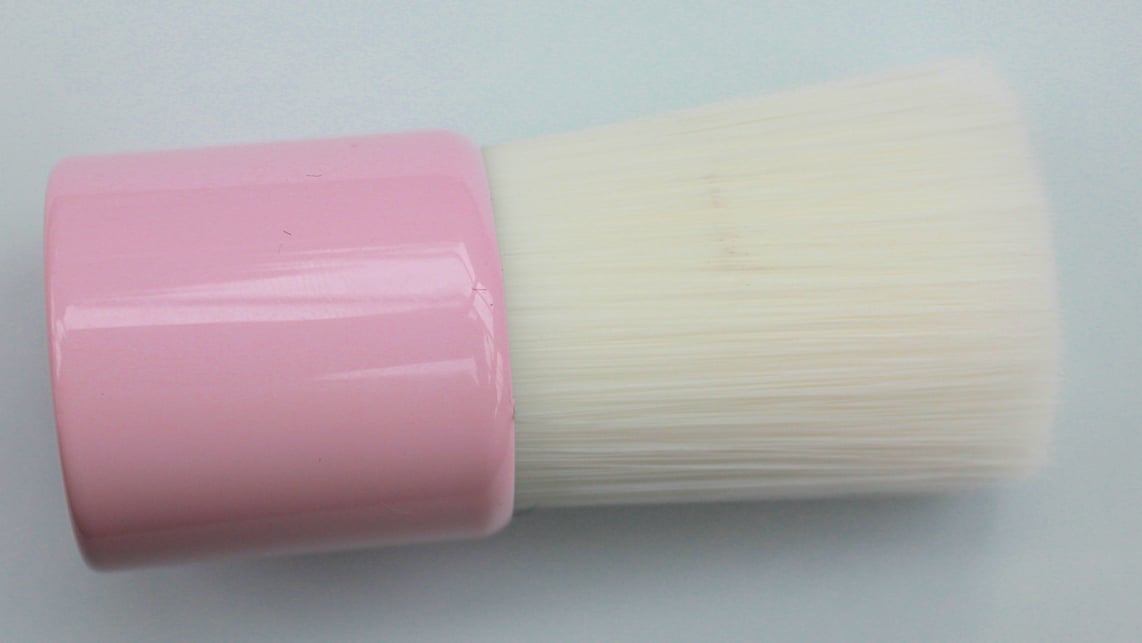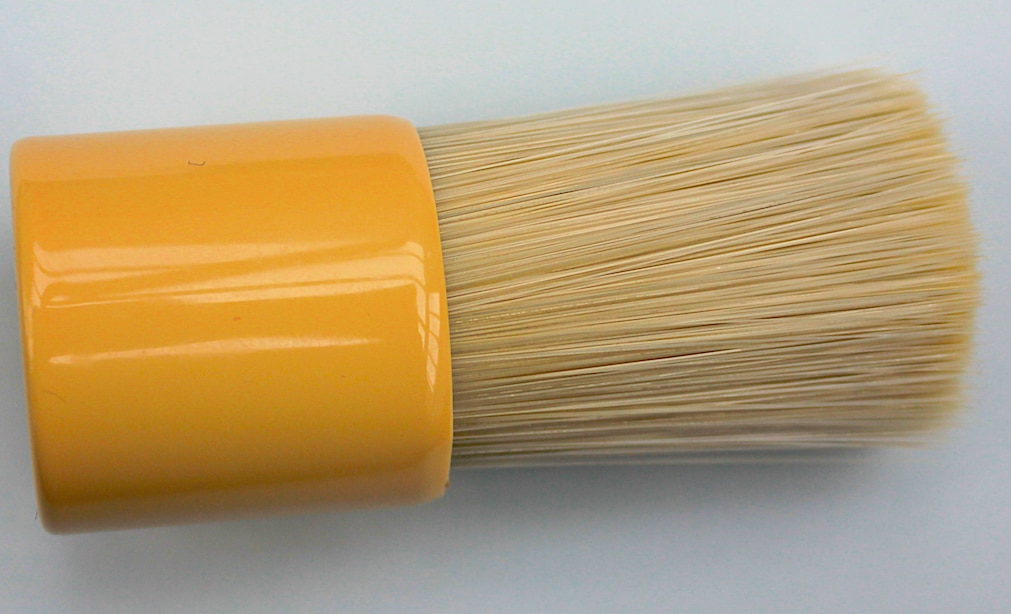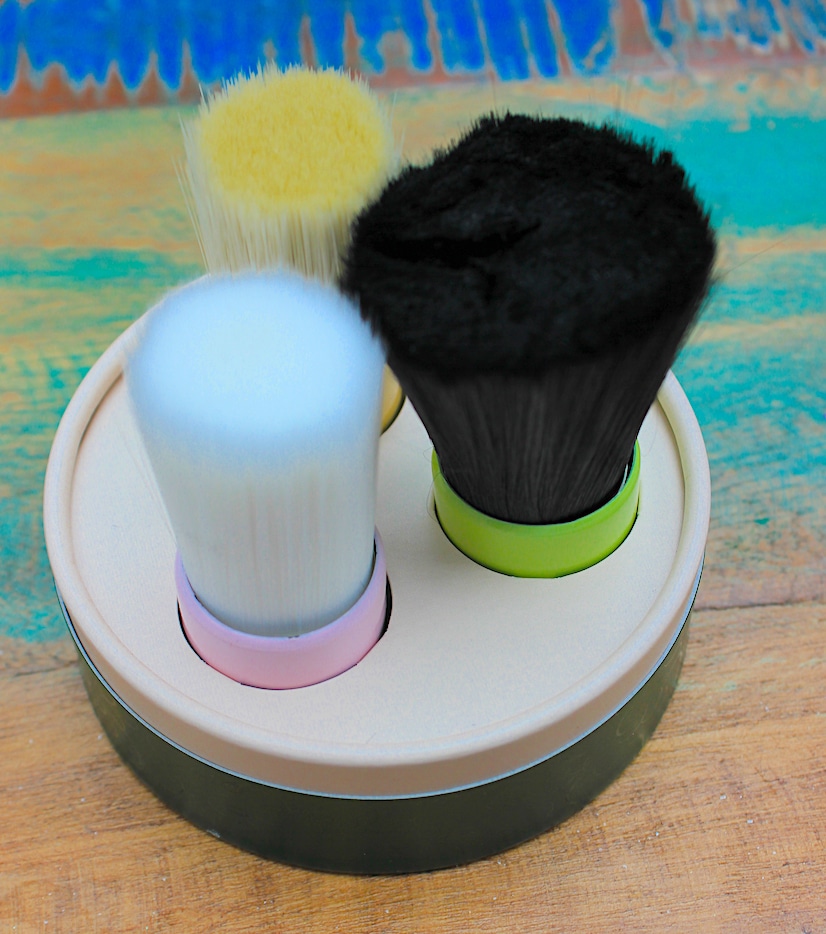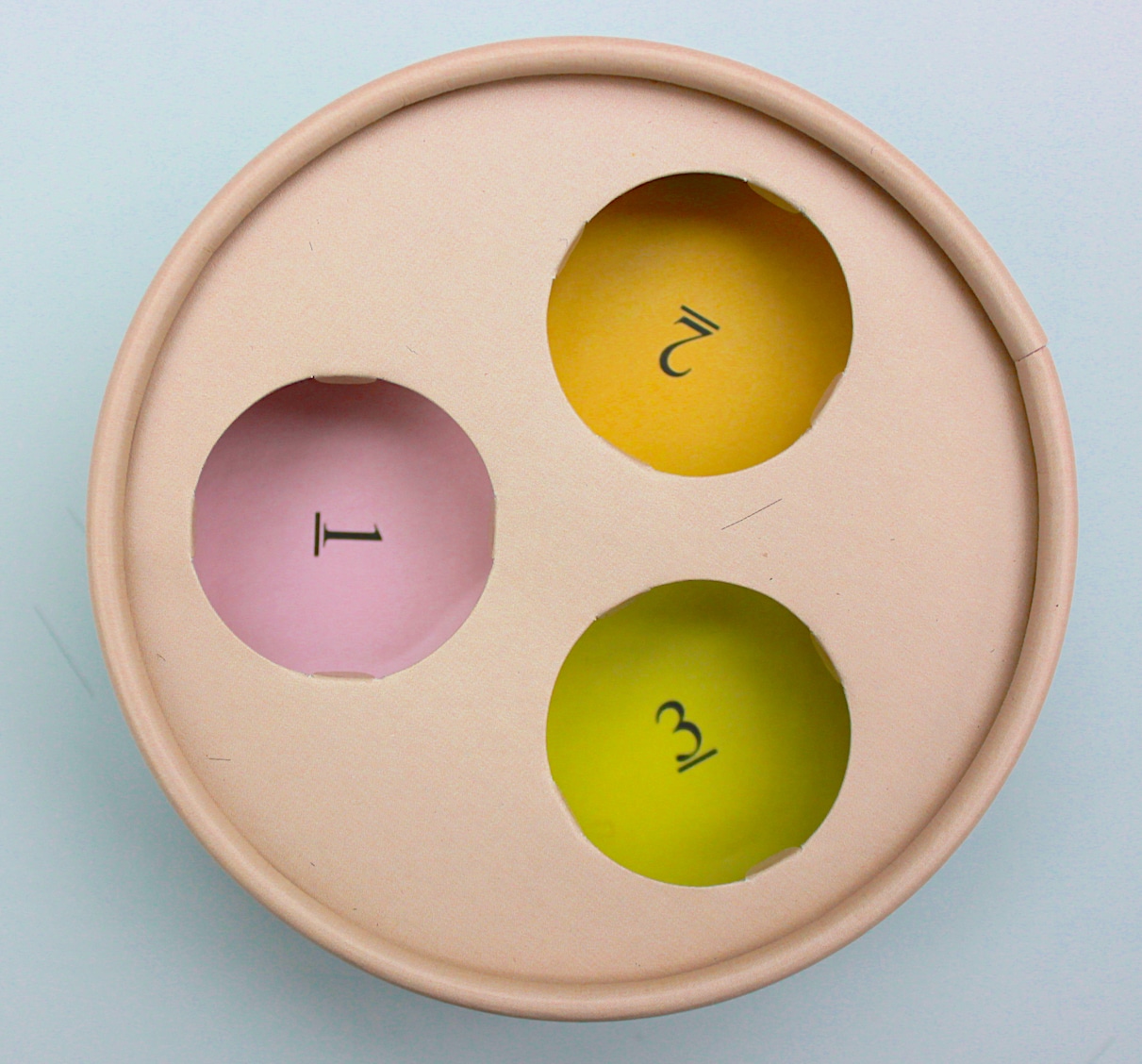The Article
Wasanbon Record Cleaning System: A Quick Brush And Brush Up
18th October 2016
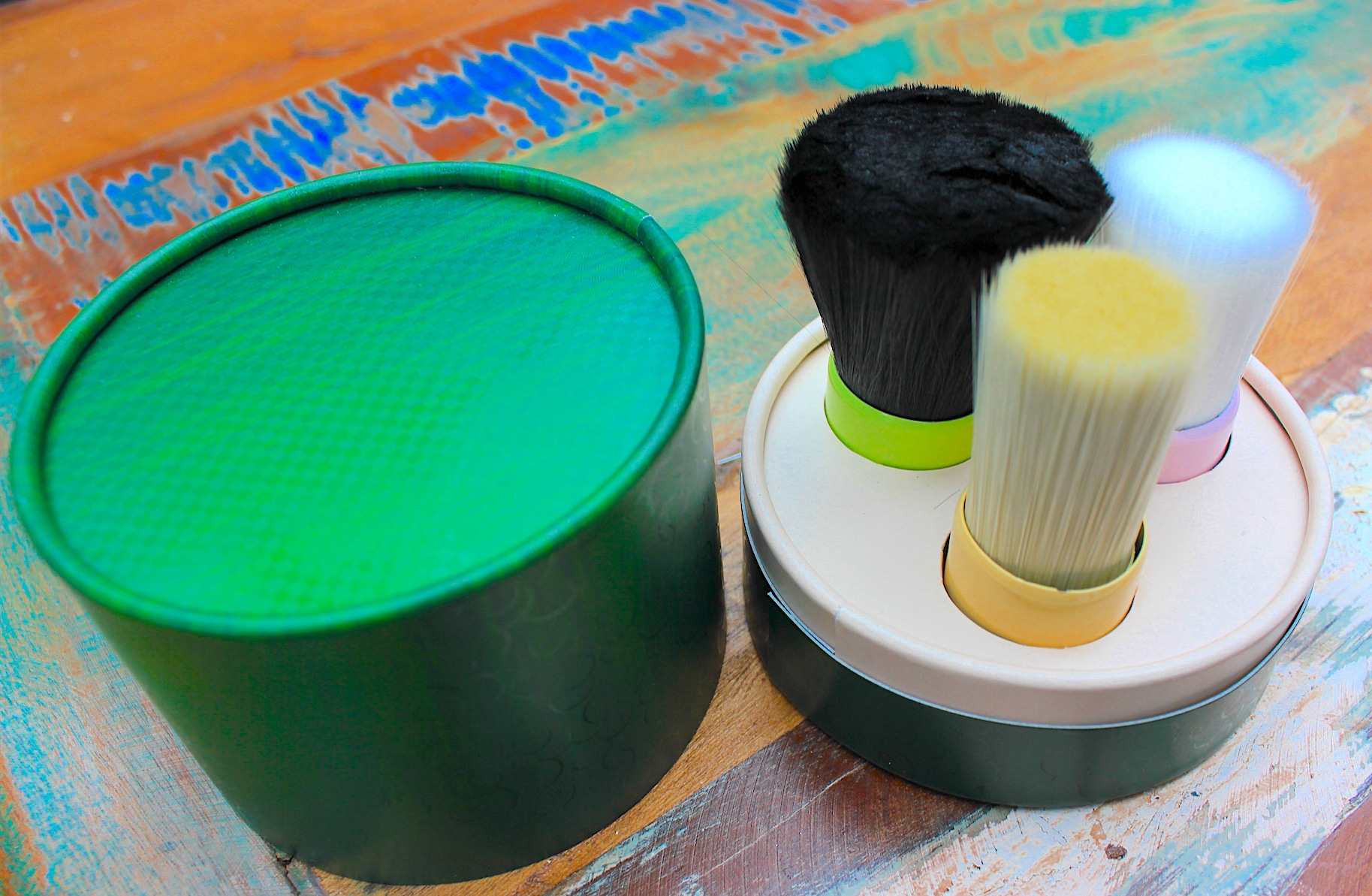
From Kashoen Co. from Kumano, Hiroshima and a 3-brush record cleaning system for your vinyl. Paul Rigby has his grooves at the ready
Created in Japan by a company that realised that its rather expensive paintbrushes and make-up brushes could be put to better use, this set actually includes a mistake or an error or a failure. That is, the company realised that its “Sakiware” brush, which uses synthetic hog hair, didn’t quite cut it as an intended paintbrush because its bristles were too fine and finely separated. Then some bright spark realised that such a brush would be idea to reach deep into a vinyl record groove to remove dirt and debris.
The company says synthetic ‘hog hair’ but I’ve listed the chemical base to each bristle type below.
The three brushes arrived in a stylish container which I hear is finely cut bamboo and adorned with a low-key pattern and product titles. You lift the top to reveal three brushes of different types and bristle structure. The straight brush resident in the pink container is made from PBT (polybutylene terephtalate), the spread-tipped brush in the orange container is made from PET (polyethylene terephthalate) while the anti-static brush (resident in the light green container) is made from Acrylic fibre. All of those containers are constructed from a light aluminium.
The three different brushes are used to clean a single record using four different processes. The system is gentle, non-invasive and non-abrasive.
I’ve included a YouTube video which shows the system in action, below, but here is a quick instructional run-down, direct from the company which repeats the run-down featured in my recent news item on the product.
1: Anti-Static Brush (Light Green)
Gently apply the brush to the record, drawing concentric circles. This will facilitate the ease of clearing away dust and debris.
2. Straight Brush (Pink)
Wipe debris from the record by applying the brush in concentric circles from the inner grooves outward. Removes the outer layer of larger particles from the record surface.
3. Spread-Tipped Brush (Orange)
Following the groove of the record, use the brush to draw concentric circles from the inner grooves outward. Removes smaller particles from deeper in the record groove.
4. Anti-Static Brush (Light Green)
Gently apply the brush to the record, drawing concentric circles. Electrostatic discharge will prevent dust and debris from clinging to the record.
Note: Apply these steps to your records depending on the condition of each disk. For example, follow steps 1 through 3 for records that have not been listened to for some time. For records that are listened to regularly, forgo step one and apply only steps 2 and 3.
In use, I found the cleaning system almost therapeutic. No vacuum motor noises. No messy cleaning liquids. No visual frustration of moving dirt from one side of your record…to the next. The entire sequence lasted just a few minutes. I also liked the idea of utilising the anti-static brush off the moving platter. To me, touching and trailing a brush over a moving platter always seemed a great way to create static in the first place.
If the brushes themselves become dirty then the company recommends a light wash in lukewarm water or – in extreme cases – gentle detergent. After which, you hang the brushes with the bristles down to facility drip drying.
SOUND QUALITY
To test the brush system, I left out my Steven Wilson solo LP, The Raven That Refused to Sing And Other Stories, open to the elements for a few days and collected a fair amount of dust in the process. I applied the brush system and played the afflicted side all of the way through. I was pleasantly surprised that the music exhibited a transparency and clarity that I was used to. This is a new and relatively quiet pressing with only tiny, subtle ticks every now and again. I wanted to hear no more than that and I didn’t. This LP, which had yet to be troubled by any record cleaning machine actually sounded slightly quieter after the Wasanbon had been applied.
More than that, I was happy to report that there was no static discharge at any point during play. When the side had finished playing, I left the arm on the LP surface, skimming over the run out grooves for a time, giving it time to possibly pick up any static charge in the meantime (my listening room has its fair share of dust floating about and is not without static attraction). I then played the side again immediately and no static was heard. The playback remained clean, open, spacious and airy in nature. No hiss, not noise, no pops, no clicks. Just music.
The final test was observational. I took a close look at my turntable stylus to see if there had been any potentially wearing dust accruing. Clean. There was not a fleck of dust on it.
I had the same results on a few other sample records which received a similar treatment.
CONCLUSION
OK, let me say what the Wasanbon system is not, first of all. Don’t expect this brush system to perform miracles. If your LP has groove damage, the Wasanbon won’t make any difference at all (you need specialist advice for that issue). If your grooves are packed with full of nasty crackles and Rice Krispie noises, don’t expect this system to remove all of that, either (you probably need a proper record cleaning machine). This brush system will not remove the more caked in grime problem, especially prevalent within older LPs.
So what use is this system then?
If you have a record that has a visible layer of dust that will possibly produce a slight hiss, one-off crackles and extraneous noise and collect on the stylus tip, threatening the life-span of your stylus, then the Wasanbon will help. If you have a record that crackles with static as it is removed from the sleeve then this brush system will be ideal. If you have a record that you haven’t played for a few days (especially weeks) or more, then give this brush system a whirl…just in case. Wasanbon will clean easy to remove dust and abolish static during the immediate play.
I utilise expensive record cleaning machines as part of my vinyl playing regime but there are times when my records may have been accidentally left out of their sleeves for too long and now have a layer of dust over them. There are other times when I also repeat play a record that I know is clean enough not to warrant another RCM session. That’s when the Wasanbon brush system comes into play for me. Even I would rather turn to this brush system than utilise a cleaning pad (no-matter how expensive it may be) or a basic cleaning brush. As it stands, I would say that this brush system is right up there in terms of a non-aggressive, manual cleaning system.
WASANBON RECORD CLEANER
Price: $100
Web: www.jico-stylus.com
To see the YouTube video of the set ‘in action’, click HERE.
GOOD: removes dust, removes static, design, keeps stylus clean
BAD: brush system has cleaning limitations, price

